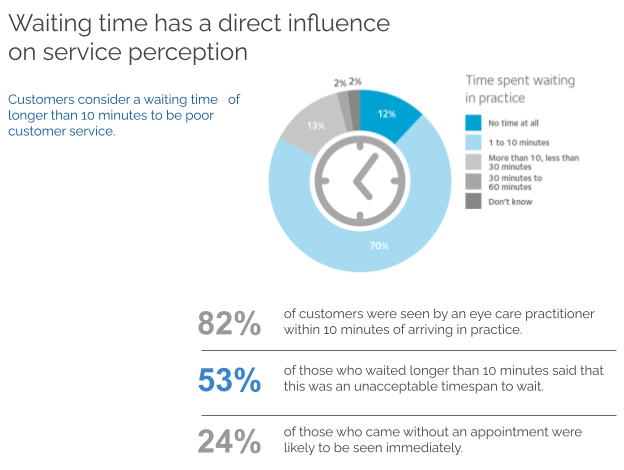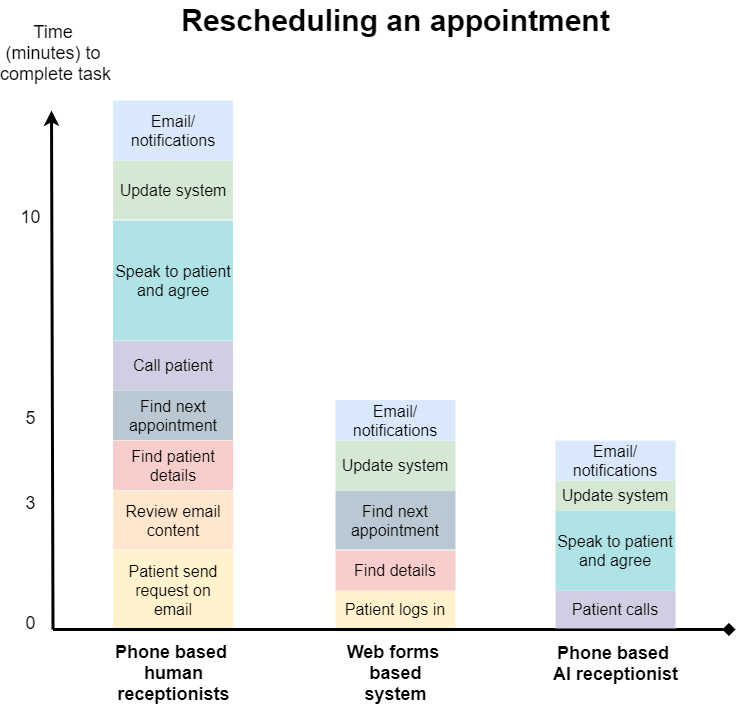 |
submitted by /u/Botmywork [link] [comments] |
Month: April 2021
-
Chatbot Glossary –Chatbot Marketing Terms for Marketer
-
How to talk about a nonprofit bot without breaking community rules
Hi Everyone
I want to socialise a covid vaccine nudge & remind bot which I think can be useful in the present scenario. I have no axe to grind (it’s not for profit I am paying platform and server costs from my own pocket) but want to be conscious of the subreddit rule where it might look like I am ‘using this subreddit for self-promotion and advertisement’.Is there a way to do that while being respectful of the rule?
submitted by /u/Rsen555
[link] [comments] -
How to build conversational forms on my website?
I’m looking to build conversational forms to embed in a course creation website. Any tool suggestions to do it?
submitted by /u/Jane_Andrade
[link] [comments] -
Chatbots In e-learning: How Chatbots Can Help To Develop Awesome Employees
Chatbots in eLearning: How chatbots can help to develop awesome employees
Your organization’s employee experience has a lot of impact on many areas of your business, including employee retention, work productivity, work culture, and ethics. So, supporting them with the necessary resources to improve their interaction with jobs is essential to help them develop their skills.
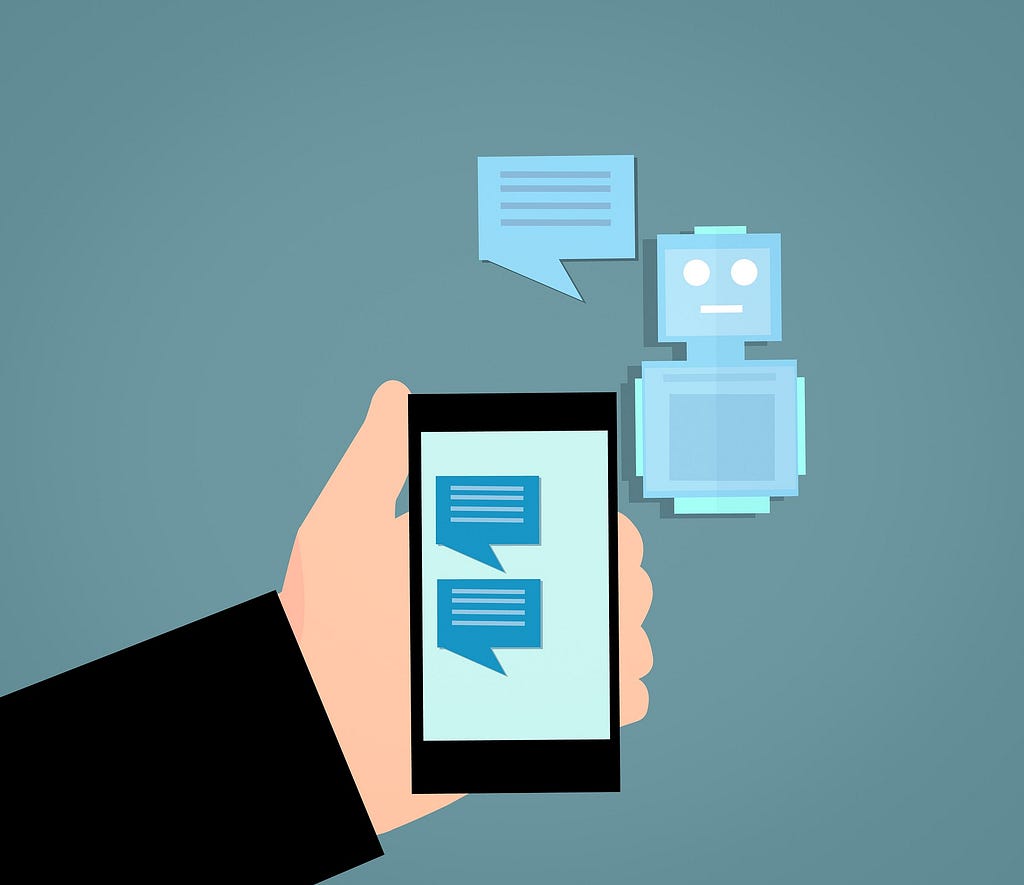
Image by Mohamed Hassan from Pixabay
Without adequate support for employees, it can be hard for a business to achieve optimum results. That’s because a lack of proper work experience can result in an inefficient work process and employee turnover.
While there are many ways organizations can stay successful, one effective way is by helping employees develop their skills through technologies like Chatbots. That’ll help them to acquire more experiences that are needed to progress in their workplace.
Today, chatbots in eLearning are revolutionizing the arena of employees’ interaction with an online course. Apart from that, they’re also helping to enhance employee experience in many areas, including human resources activities, IT support, and onboarding training.
Here, we’ll be exploring a few ways that Chatbots can help to develop employees and improve their experience.

5 ways chatbots in eLearning can help to develop awesome employees
Quick and simplified process
Although some organizational processes can be crucial to do, they’re a bit complex and can be hard to perform. For instance, HR functions involve many complex processes, frameworks, and policies which employees must perform every time.
So, the introduction of chatbots in e-learning can help HR teams perform complex operations and communicate information automatically, anytime. With chatbots, employees can easily access HR and get every resource needed for them to develop and improve on their experience.
Also, chatbots can save time for employees in the HR department by helping them take care of trivial questions that may arise. By so doing, they get to focus on other skills like employee engagement, performance management, or career pathing that helps them and the company develop.
Trending Bot Articles:
3. Concierge Bot: Handle Multiple Chatbots from One Chat Screen
Skills development
The development of your employees’ skills is a great contributor to the success of your business. However, it requires a lot of investment. One of the ways an organization can make this investment is through training and skill acquisition programs.
In today’s digital age, skills are assets for employers. To them, hiring an employee with the perfect skill sets is vital for their business to grow. While that is so, it’s also essential that employers help their employees to develop their existing skills and acquire more skills.
Employers can improve and achieve better learning outcomes by integrating chatbots in eLearning. With chatbots, the development of skills like language processing and machine learning becomes easier for employees. Apart from that, it’s much easier to deliver the right information on any specific subject matter using chatbots, anytime.
Improvement of knowledge retention
Integrating chatbots in e-learning, apart from helping employees develop their skills, also helps them to improve their knowledge retention. While most organizations arrange different training programs for their employees, most don’t get enough motivation to participate in the program.
That’s often a result of the lack of proper engagement in training. Integrating chatbots in eLearning can help to improve employee engagement levels, and thus help them to navigate smoothly through their course module. That also contributes to boosting their retention ability and helping them acquire knowledge with ease.
Easy accessibility to training resources
Although the time-honored practice of training has been the best approach for developing skills in the past, it’s not as effective anymore. Chatbots in eLearning has been a better alternative for developing their skills.
With AI-powered chatbots, employees/learners can easily access their training resources at their convenience. Also, they can choose to complete their training and acquire knowledge at their most convenient time.
By integrating chatbots in eLearning, you need not worry about the new Learning Management System. That’s because it can easily get integrated with existing LMS to deliver the best learning experience.
It also empowers employees to access their training material on their phones, hence, helping them to reduce dependence on traditional classroom learning.
Chatbots in eLearning are the next big thing. Gone are the days that they only focus on handling employees’ questions. Today, they can help employees to develop their skills and acquire a better learning experience.
With proper organizational plans, departments like HR can make use of chatbots to handle varieties of work tasks and achieve the best results.
Don’t forget to give us your 👏 !



Chatbots In e-learning: How Chatbots Can Help To Develop Awesome Employees was originally published in Chatbots Life on Medium, where people are continuing the conversation by highlighting and responding to this story.
-
Conversational AI for Opticians
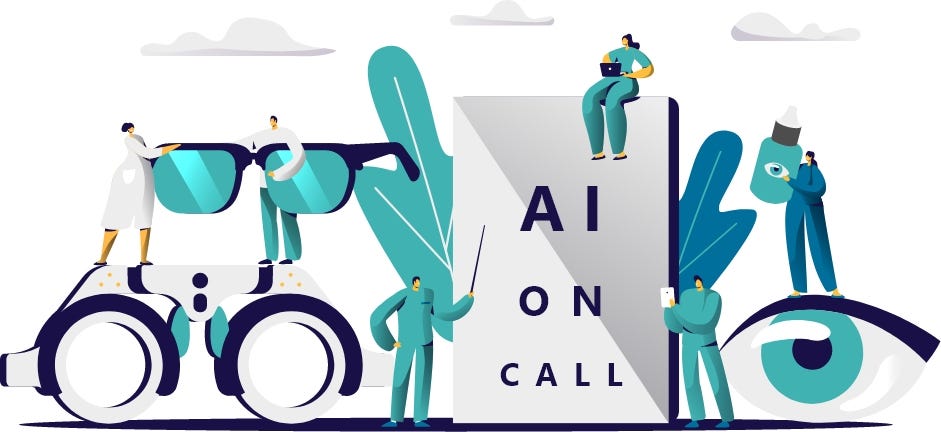
Real Test of Patience with Optician Practices
Imagine a patient is driving back home from the office, or he is in an adventure in the park with the kids and reminded of booking an appointment at the optician practice. But as he is away from a computer, the only option is to call, even though there could be other alternatives for booking an appointment with that practice. If lucky enough to call in the appointment-taking hours, after first or more attempts, a receptionist picks up the call. With her gentle voice she asks “Can I keep you on hold for 1 mins”? 3 minutes. 5 minutes. Ten minutes. Finally they hear a voice “Sorry! For keeping you on hold for this long”. The patient is then asked about all the details and hopefully booked with an appointment.
Result : Frustration. And he will probably have second thoughts booking with that clinic again.
The hunt for cognitive strategies in health care is on. In this modern age, you may have thought that emails or even social media posts have surpassed the phone, but in fact, approximately 80% of inquiries received by your business are more likely to be in the form of phone calls.
Every time the phone rings at your optician practice, you have a new opportunity to provide excellent customer service to your caller. Any call that comes into your private practice is a chance to increase sales by assisting a prospective or current customer. With too much riding on the ability to return phone calls on schedule, failure to do so is not a choice that you should seriously consider.
Regardless of how well equipped an optician practice may be, it is likely they are experience challenges in their business. Let’s examine the hurdles faced by them and the best ways to overcome them.

Handling Call Volume
On average, how many calls would you bet an optician practice receptionist handle a day? Between patient calls, new patients reaching out with queries, referrals from hospitals and eye clinics, test results from outside labs, and more. It is likely that your receptionist must be attending upwards of maybe 150 incoming calls a day. Often, your receptionist also handles outbound calls for consultations, follow ups, availability of lenses, and more. This means the receptionist stays on the phone for a good majority of the day as well as handling patients and medical vendors that enter through your doors. Your receptionist stays busy handling patient needs! Sometimes they have to stretch their working hours to more than 8 hours a day.
While they are answering the phone, it is important that they adhere to phone etiquettes. But the question is how far a person can maintain it after getting overwhelmed with that many calls in a day? The answer is “ Impossible” . Maintaining excellent phone etiquette helps to improve patient satisfaction and will help move the call along in a positive manner.
The diagram below clearly states that long call wait times and poor customer service goes hand in hand (source: YouGov report).
A waiting time longer than 10 minutes is considered to be poor customer service Fielding Feedbacks
At the end of the day, your front desk receptionist takes the stress of the feedback from patients. These feedbacks would be usually negative ranging from long hold times, to waiting for the practitioner to start the test, to the quality of glasses or contact lenses received or the care shown during an appointment. For a receptionist these negative feedback can be a drain and for your business it’s a risk. But if you see many of these circumstances are not under your control. It is still beyond important for you to have empathy for the patient’s situation and to determine what can be the best way to address those remarks.
Missed Calls and Lost Revenue
If your practice is missing calls, you’re losing out on important opportunities. People still make phone calls if it is an emergency or if they are not around a computer. And if you are missing such calls, it delays patients who need care and prevents your practice from growing and remaining financially viable. Then, when a patient’s call is missed, one of three things happens for them(ordered from best to worse)
- They get their query answered from a recorded message (e.g., your clinic hours)
- Drop a voicemail
- They hang up being frustrated and angry
Of these 3 things, #3 is clearly the worst. If a prospective new patient calls your practice but then gives up, you’re probably not going to hear from them again.
Trending Bot Articles:
3. Concierge Bot: Handle Multiple Chatbots from One Chat Screen
- According to a research, 74% of people are likely or very likely to choose another business after a negative call experience.
Of course, you or your staff does not intend to miss calls; it only happens because your practice is running hectic during the workday and then prohibitively expensive to staff at night or on weekends.
Costs that Come with Staffing and Adopting Technology
Sometimes a person who calls your practice and does not reach a human. This is unavoidable unless you staff your phone lines 24/7 (expensive and inconvenient), pay for a staff at a triage line (burns a hole in your pocket), or hire an answering service machine something like a voicemail.
For optician practices that are inundated with calls and other challenges, here is a solution that could help their receptionist decrease time spent on the phone, reduce call waiting time and help maintain efficiency, productivity, and healthy patient relationships.

Optician practitioner helping customers Enter Conversational AI and improved Customer Service
Spike in call volumes require optician practitioners to take proactive approaches to identify solutions that can help patients with self-service. The obvious solution that comes into the picture is Conversational AI solutions which can include things like virtual assistants/chatbots, machine learning, and voice analytics. In today’s time Conversational AI can be deployed and adopted with speed and scale to help increase call volumes and transform overall patient experience without going heavy in pockets.
According to BID Research and ReportLinker, the global healthcare robotics market is predicted to reach $11.4 billion by 2023 and the market for artificial intelligence in healthcare has the potential to reach $36.1 billion by 2025.
So how Conversational AI will rescue your Optician Practice from such a crisis?
Better Patient Experience at a lower cost
Staffing a 24x7x365 your optician practice with human agents can be costly or impossible. When you add the resources required to support multiple lines of tasks and languages, it increases the headcount and skill sets required to serve patients around the clock. But with Conversational AI-powered receptionists you will reduce the number of front-desk staff required on your practice due to the repetitive nature of routine calls. All of these lead to significant cost savings.
Personalization
Your optician practice can collect customer data to deliver an unrivaled level of personalization to the patients. This can range from simple lens or glasses recommendations based on past purchases, to eye tests in real-time.
Personalization can greatly improve the patient experience, promote satisfaction, improve conversion to new patients, and drive business growth. Conversational AI can also help your staff at practice to have context to understand who they are talking to. Understanding their past consultation history, their purchase history , and what their experiences have been so far with your practice you will be well equipped to provide the best possible patient experience, tailored to your patient’ needs.
Self-Service Options
AI driven phone assistant are 3 times more efficient than a human assistant The majority of Millennials who call optician practices avoid situations, which typically require a human interaction and long wait times and prefer to have self-service options instead. These tech-savvy Millennials prefer to book their own appointments, solve their own queries, either on a website, AI driven chat or AI driven phone call. Deploying Conversational AI solutions into your phone service can help these patients stay away from call waiting frustration.
No missed calls and more conversions
In addition to helping you elevate experience for current patients, Conversational AI solutions can act as an asset to your optician practice front desk and help with capturing new patients and miss no calls. With Conversational AI powered virtual receptionists at your front desk, your practice can respond to patients so quickly that they will continue to schedule an appointment with you and visit you as a potential customer.
Conversational AI will help you reach more leads quickly and efficiently. Some practices already use solutions for live chat on their website or on their Facebook business page to easily interact with patients and new leads — these AI platforms simply just allow you to take that patient engagement offering to the next step.
Introducing Swifter AI
As a Conversational AI platform , Swifter.AI has foresaw the inevitable integration of conversational AI and Big Data into healthcare and optician practices and offers conversational AI-powered virtual receptionists that would decrease call wait times, reduce costs and enhance patients experience.
If you are looking for a Conversational AI solution that could transform your optician practice in terms of patients experience and engagement? We can help. Contact us today!
Request a demo to explore how Swifter AI can help transform your healthcare operations and enhance patient engagement with Conversational AI.
Our 24/7 AI assistant is available over web chat, on Facebook Messenger™ or over the phone +44 (0) 1256588165.
Don’t forget to give us your 👏 !



Conversational AI for Opticians was originally published in Chatbots Life on Medium, where people are continuing the conversation by highlighting and responding to this story.
-
Adaptive chatbot dialogs
Using machine learning
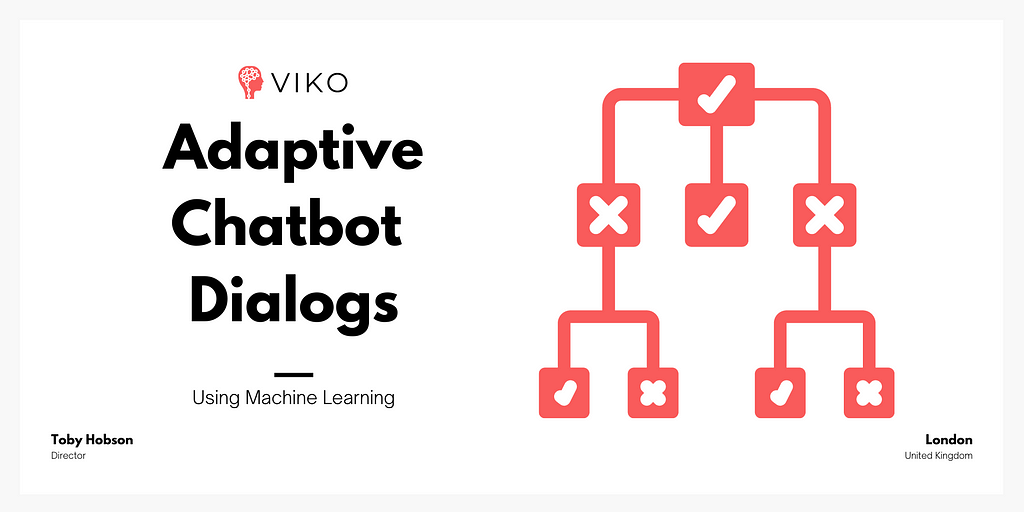
Building a chatbot initially seems quite simple. The internet is full of examples, and it’s easy to put something together. In the real (i.e. production) world, life is more complicated.
Computer programmers make assumptions about user behavior. We establish the invariants of the system and enforce them through UIs, validation rules and error handling. Life is predictable. Unfortunately chatbots, like all bots, should behave like humans, not computer systems.
We expect chatbots to handle whatever is thrown at them. In this post I’m going to cover the things we need to think about when building a production grade chatbot. In particular, I’m going to explain why we need to build adaptive dialogs.

The concepts in this post apply to all major chatbot engines (Rasa, Google Dialogflow, Amazon Lex etc).
Intents and dialog flows
Most chatbots rely on pre-scripted dialog flows, built to meet a specific goal. Let’s take a simple example:
Bot: how can I help?
User: I need a duplicate bank statement
Bot: ok which year?
User: 2020
Bot: which month?
User: mayThis simple example can be served using the classic intent to dialog mapping. In this scenario, the initial phrase “I need a bank statement” triggers a pre scripted dialog. The dialog has two turns/slots, prompting for the month and year.
Dynamic slot filling
Even this example is not quite as simple as it seems. What happens if the conversation goes like this:
Bot: how can I help?
User: I need a duplicate bank statement for may 2020
Bot: ok which year?
User: i just told youIf we now ask the user which month and year we look stupid. The dialog flow needs to adapt. The most common solution to this is to use a combination of Named Entity Recognition and slot filling. In this case we need to fill two “slots” — month and year. First we map the slots to prompts:
year ➞ what year?
month ➞ which month?Next we perform Named Entity Recognition (NER) on the user’s text, trying to fill both slots. In the example above, “bank statement” triggers the dialog and NER fills the year and month slots. “what year?” and “which month?” will not be asked.
Trending Bot Articles:
3. Concierge Bot: Handle Multiple Chatbots from One Chat Screen
Part of Speech Tagging & Dependency Parsing
So far so good. What happens if the conversation goes like this:
Bot: how can I help?
User: I need a duplicate bank for the last month
Bot: ok which year?
User: this year of courseThis becomes more difficult. Named Entity Recognition is unlikely to work for “the last month”. We could explicitly train the NER model for this scenario, but it’s likely to be brittle. We need another approach. One approach is to first attempt NER and if this fails, fall back to Part of Speech tagging and Dependency Parsing.
Part of Speech (POS) tagging tells us that “bank”, “statement” and “month” are nouns. Dependency parsing tells us that”bank” and “statement” form a compound noun; “last” qualifies “month” and “bank statement” is the object of preposition to “month”. If we put all this together we can understand the users intent:

Part of Speech tagging and Dependency Parsing is much more complex than simple NER, but it’s also a lot more flexible.
Capturing the right data
Let’s take another example, this time retail. Imagine we run a clothing store, and we want to recommend products to our customers. First we ask the user some questions to understand their wants. For this example we will assume we need to fill these “slots”:
- product
- style
- brand
- fabric
- colour
- size
- price
We can use a combination of Named Entity Recognition, Part of Speech tagging and Dependency Parsing to fill these slots. Hopefully system is smart enough to adapt, filing more than one slot at a time.
“I want a black dress in size 8”
In the above example we don’t need to ask for the product, colour or size, but we still need to ask 4 additional questions.
The risk of over qualifying the need
Do we really need to capture 7 pieces of information before displaying some results? We run two risks:
- We may force the user to be so specific that we can’t actually find any matches in our database.
- The dialog may be so long that the user gets bored and gives up.
The risk of under qualifying the need
Maybe we decide to focus on the attributes/slots that we absolutely need. Perhaps product type, price and size. After all, there’s not much point offering someone something they can’t afford or won’t fit.
However, we have to ask ourselves what value are we adding? A simple faceted search on the e-commerce site would achieve the same results. We also run the risk of under qualifying the need. For example, if the user asks for a dress costing less than £500, we may find hundreds of matches.
Striking the balance
Ideally we want to achieve three goals:
- Meet the user’s needs
- Offer real value, beyond that which is achievable through other means (e.g. a website)
- Stimulate and retain the user’s interest (AIDA)
The first and second goals could be achieved using a rules based approach with short-circuiting. We ask the user questions, whilst checking our database for matches. When we are able to offer “enough” results we stop asking questions and move onto displaying the results.
The third goal is not so easy to achieve. We could also use a rules based approach, maybe limiting the attributes to 3 for product one, 4 for product two etc. This is guesswork though. In reality the user’s attention span will be dictated by many factors including:
- the intent / need
- the time of the day
- the device used
- new vs repeat/loyal customer
Using machine learning to drive the dialog flow
Machine learning can help us here. During a “training” period we build the dialogs dynamically, trying different permutations of slots. Like split A/B testing on steroids. We record everything, including the time of day, drop off rate, conversions etc. This behavioural data can be used to build a machine learning model. This could be a simple regression model or something more sophisticated like a decision tree or ensemble model.
When we have a good model, we can plug it into our dialogs. We feed the same variables (product, device, time etc) into the model and ask it to predict which slots should be filled. This can of course be supplemented by a rules based algorithm. The end result is dynamic dialog flow, which is statistically proven to generate the best results.
We used retail e-commerce as an example, but this concept can be applied to any domain. Going back to our original banking example, we could ask the user if they want a paper or electronic statement? do they want a certified copy? etc. A machine learning model could predict which questions to ask to get the best results.
Summary
At a minimum our dialog flow should be smart enough to avoid asking redundant questions. We do this by filling multiple slots from each user response. We only prompt users for unfilled slots. Named Entity Recognition may not be enough. We may also need to also employ Part of Speech and Dependency Parsing for more complex concepts.
Finally, we need to think carefully about the information we capture from our users. If we ask for too little, we may be unable to offer any value. If we ask for too much we may lose their interest or struggle to return a result. We can use machine learning models to build dialog flows dynamically, delivering the best results for each individual user.
Don’t forget to give us your 👏 !



Adaptive chatbot dialogs was originally published in Chatbots Life on Medium, where people are continuing the conversation by highlighting and responding to this story.

